8th March - St Sennan
Written by Anne N 14th April 2020 updated by NJ 2024
St. Senan was born at Magh Lacha, Kilrush, County Clare, ca. 488 (died 1 March 560).
His parents were named Erean and Comgella. As a boy Senan was placed under the guidance Abbot Cassidan, and then finished his studies under St. Naul at Kilmanagh, Co. Kilkenny. Senan founded a church near Enniscorthy, in either 510 or 512. The parish is still known as Templeshannon (Teampul Senain).
He then visited Cornwall, founding a church at Sennen's Cove, another was founded in Brittany, France at Plouzane (church of Senan). He is also believed to have visited Menevia, Rome and Tours. He returned to Ireland around 520.
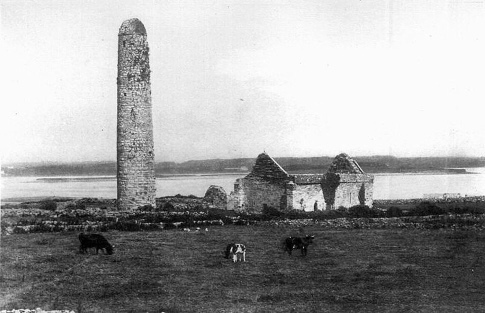
Having founded churches at Inniscarra, Co. Cork, at Inisluinghe, at Deer Island, Inismore, and Mutton Island, he finally settled at Iniscathay, or Inis Cathaigh, Co. Clare. He was visited by Saints Ciarán and Brendan, and other holy men, who had heard of his sanctity and miracles.
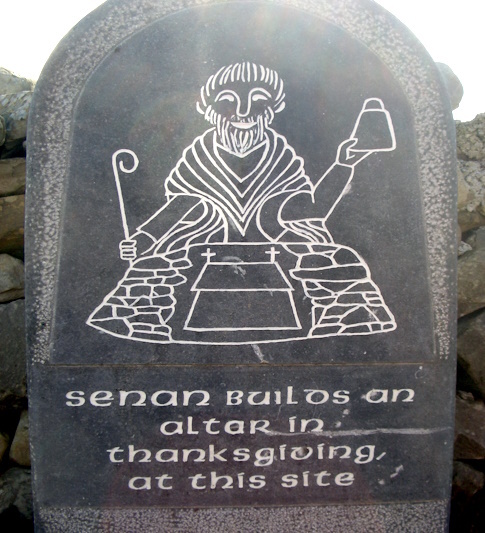
Inis Cathaigh - Scattery Island
... became a famous abbey and seat of a bishopric with St. Senan as it's first bishop. This event may be between 535 and 540. St Senan is buried in Scattery and it was the custom to have all the western chieftains brought to the island to be buried. An excellent source of information is Clare Heritage
Traditions of Scattery are:
1. There are no mice, rats, coarogs(?) or rabbits on it.
2. A Scattery person has never yet had to call the priest at night.
3. Only certain people can land on Scattery alive or dead and only certain people may be buried there. Duchas Schools Collection - Cloonadrum, Co. Clare
No women allowed
"St. Senanus and the Lady" by Tom Moore. The lyric, says that no woman was allowed to enter Inis Cathaigh; not even
St. Senan's sister, St. Cannera, was permitted to land there.
Yet St.
Senan founded two convents for nuns, and was actually on a visit to one
of them when he died. Legend has it that when St. Cannera died, she
willed it that she should be buried near Senan.
To stay true to his own edicts, Senan waited until low tide to bury her in the inter-tidal zone, which was not officially part of the "island", thus fulfilling his sister's wish while not breaking his own rules.
There is also a legend that he refused St. Brigid entry...
... St. Brigid heard about him so she made up her mind to visit him. St Senan saw her coming but he would not let her land because he did not like women. Duchas Schools Project
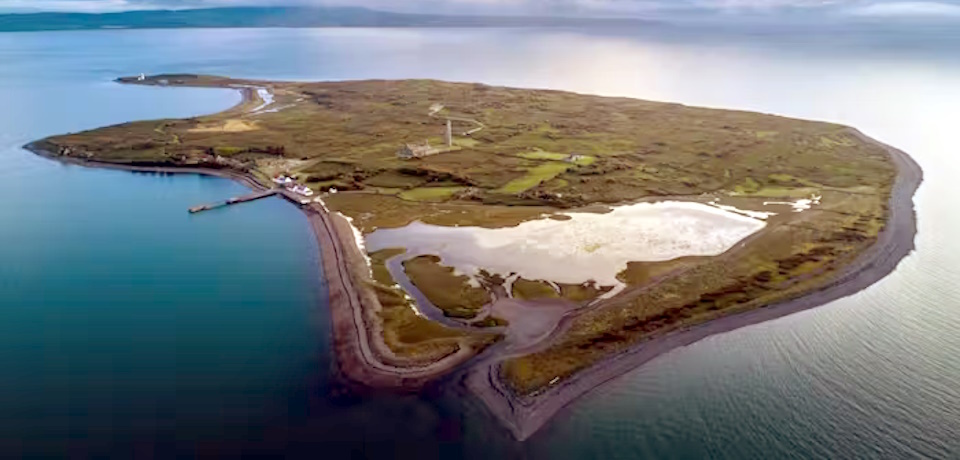
Senan and the Monster
(The origin of "Throw a spit on him" said when a horse shivers after taking the tackling off him - Collected by B. S. O'Huiginn O.S., Cluainan Droma, from Corney Sullivan, blacksmith, Kilmurry Ibrickane aged 68 years)
When the tackling is taken off a horse he is noticed to give a shudder and around here the people have a habit of saying, "Throw a spit on him."
The origin of the saying is to be found in the days of Saint Senan in Scattery Island (Inis Cathaigh)At the time when he was a young man there was a terrible dragon or sea serpent on Inis Cathaig. It used appear every night at the coming of darkness and anybody who saw it would shiver and fall dead at the sight. Several people had perished as a result so at dusk all houses were locked and bolted.
When Saint Senan arrived on the island he had a horse and he knocked at the door of a house. He would not be admitted for a while. Then the door was opened and he stood on the threshold. Just then they heard a terrific sound and the dragon appeared. The horse which was nearest to it began to shiver and was about to fall when Saint Senan threw a spit on him and commanded the dragon to depart in the name of the Blessed Trinity.
The legend explained.
This Island was up to the time of the Saint's entry there uninhabitable by reason of the the fact that a Serpent or Monster (Cathach) from which the Island derives its Irish name viz Inis Cathaigh.
This Serpent was so large (according to general belief) that it could encircle the Island the area of which is over 100 acres and put its tail into its mouth when at rest (coiled round the Island.). It was also the common belief that this huge Monster could cast stones over a cwt weight from the Island to the town of Kilrush - two miles distant.
Senan quickly banished this Monster to Lough Doo (Doolough) near Mount-Callan. (It is reputed to reappear there every 7 years). There is a valley named Gleann-na-phista near the present town of Kilrush associated with this Monster's exit from Scattery Island. Duchas.ie - Serpent or Monster - Cathach
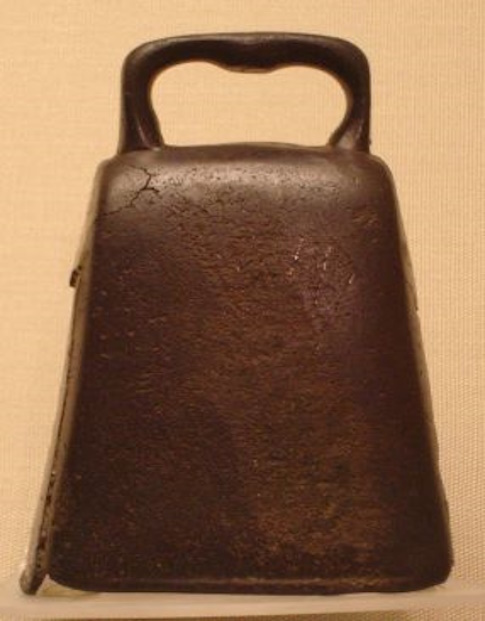 | 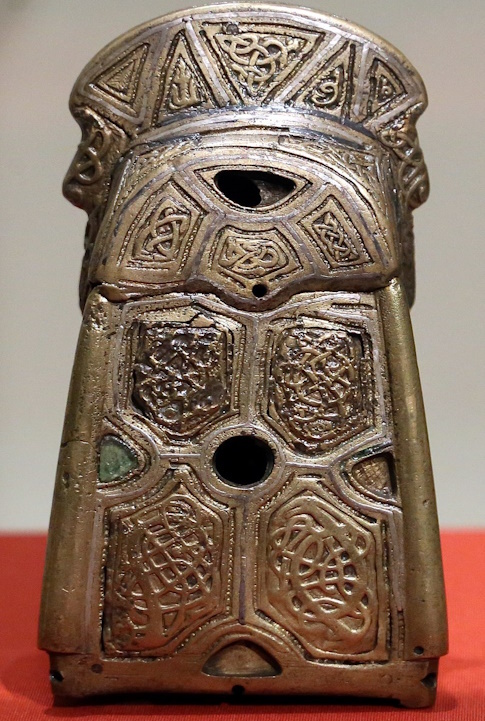 |
A Bell from Heaven - Clog an Óir
Source - Mary Jones Travel and Collections of the National Museum of Ireland, Kildare Street, Dublin for photo of the Bell Shrine.
Clog Naoimh Seanáin - Saint Ordán writes an account under the clock. The bell originally belonged to the old temple of Kil Seanan, it was located in a town called "Fidismargh" near Kilruis. It was originally called Clog na Néal because it was said to have come from the clouds. In time it was called Clog an Oir because of its yellow colour. Duchas Schools - Senan's bell colour
St Senan summoned the people of Corkavaskin to a place called the Tiedioma. He came himself accompanied by three other bishops, many deacons and monks. They prayed all night before the sermon.
They ending matins about sunrise on Sunday morning they heard a bell ringing and no creature seen but the bell. The people of Corkavaskin flocked from all sides in great multitudes to the meeting place ..... and behold the bell that was rung in the cloud fell directly upon St Senan's surplice.
It was made of very rich artifice of rich metal, with precious stones and pendaces of great value, and after pausing a little St Senan rising his beard and hair of as white a colour asthistledown which in the evening before were of their natural colour.
The bell referred to here was afterwards in possession of Mr Marcus Keane of Ennis I heard someone to say that he presented it to the London Museum. Duchas Schools Collection - West Clare





